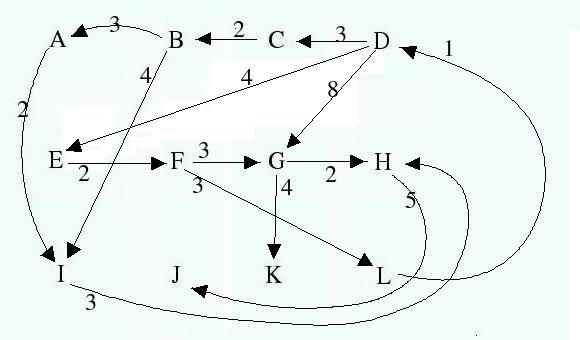Consider the following directed graph:

- Consider applying the topological sort algorithm to this digraph, and follow the same instructions as given for Problem 4, above.
- Show the steps and computations involved in identifying the strongly-connected components of this graph.
- Considering this graph as being undirected, find a minimum-cost spanning tree.
